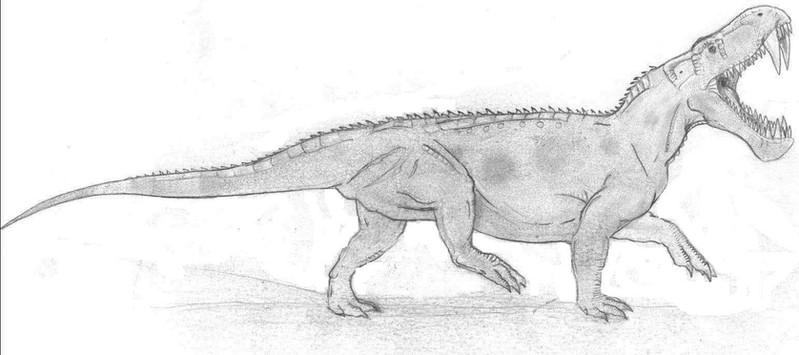HOME | DD
 Ashere — Inostrancevia reconstruction
Ashere — Inostrancevia reconstruction

Published: 2007-04-15 14:16:27 +0000 UTC; Views: 2443; Favourites: 32; Downloads: 56
Redirect to original
Description
This is my best shot at a Inostrancevia reconstruction. Just a sketch, I'll color it later.They are officially recognised as mammal-like reptiles, although more and more they are being considered as reptile-like mammals, due to the large number of mammalian adaptations, and very few remaining reptile-like traits.
Gorgonopsians are a part of a special group of therapsids called theriodonts, which includes mammals. They were among the largest carnivores of the late Permian. The largest known, Inostrancevia, was the size of a large bear with a 45 cm long skull, and 12 cm long sabre-like teeth (clearly an adaptation to being a carnivore). It is unknown whether they had fur, scales, or naked skin.
Inostrancevia was a genus of gorgonopsid therapsid found in Sokolki, on the Smaller Northern Dvina River near Arkhangelsk in Russia. The animal lived 251 million years ago during the Late Permian. The species I. alexandri is known from an almost complete skeleton missing some minor rib and vertebrae attachments.
As with all other gorgonopsid species, it was a quadruped that had an upright posture of 1-4.3 metres long, with a bone structure characteristic of strong muscle attachments. The skull of 45 cm in length contained a smaller eye socket and larger temporal opening than other less advanced therapsids, like Biarmosuchus tener. The teeth were quite large.
Info curt of wikipedia
Related content
Comments: 10

Very cool. 
👍: 0 ⏩: 1

Thank you. I love them as well. They have the perfect combination of reptile and mammal, and who can argue with those teeth?
👍: 0 ⏩: 1

Yeah, I agree. I think the fact that they evolved saber teeth 365 (I think?) million years before saber-toothed tigers came along is really interesting. It shows that if a design is good, nature will use it again.
👍: 0 ⏩: 1

Not so much that nature uses it again, but that it tends to re-emerge because it has more advantages then drawbacks, and as such when these features emerge they are not rapidly removed from the gene pool.
I think.
👍: 0 ⏩: 1

The anatomy is very good, but I suggest to make it less reptile-like, it probably didn't have a scaly, reptilian skin, but a glandular, soft, bare, mammal-like skin. The "saberteeth" also looks a bit bigger than in the skeleton (not much, altought). Can't wait to see the final, coloured version
👍: 0 ⏩: 1

Thanks.
How do I show the soft, mammal skin, though? Thats why I went with reptile skin. Easier to show.
👍: 0 ⏩: 1

Well, mammal skin it's easier, just remove the square scales and it will look much more hmm... "smooth". Also it seems probable that at that stage they maybe start to develop some kind of hair, so maybe you can play with that in the dorsal crest of little scales you put in its back.
👍: 0 ⏩: 0





























